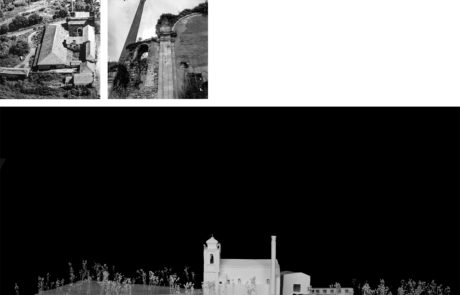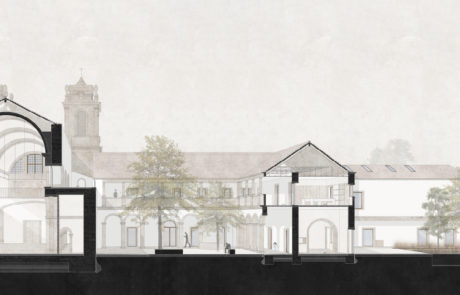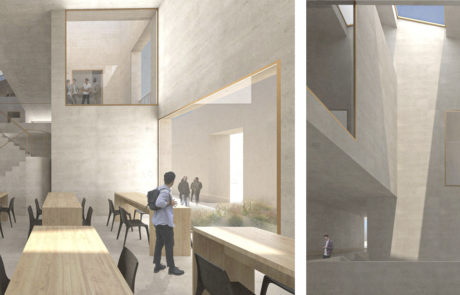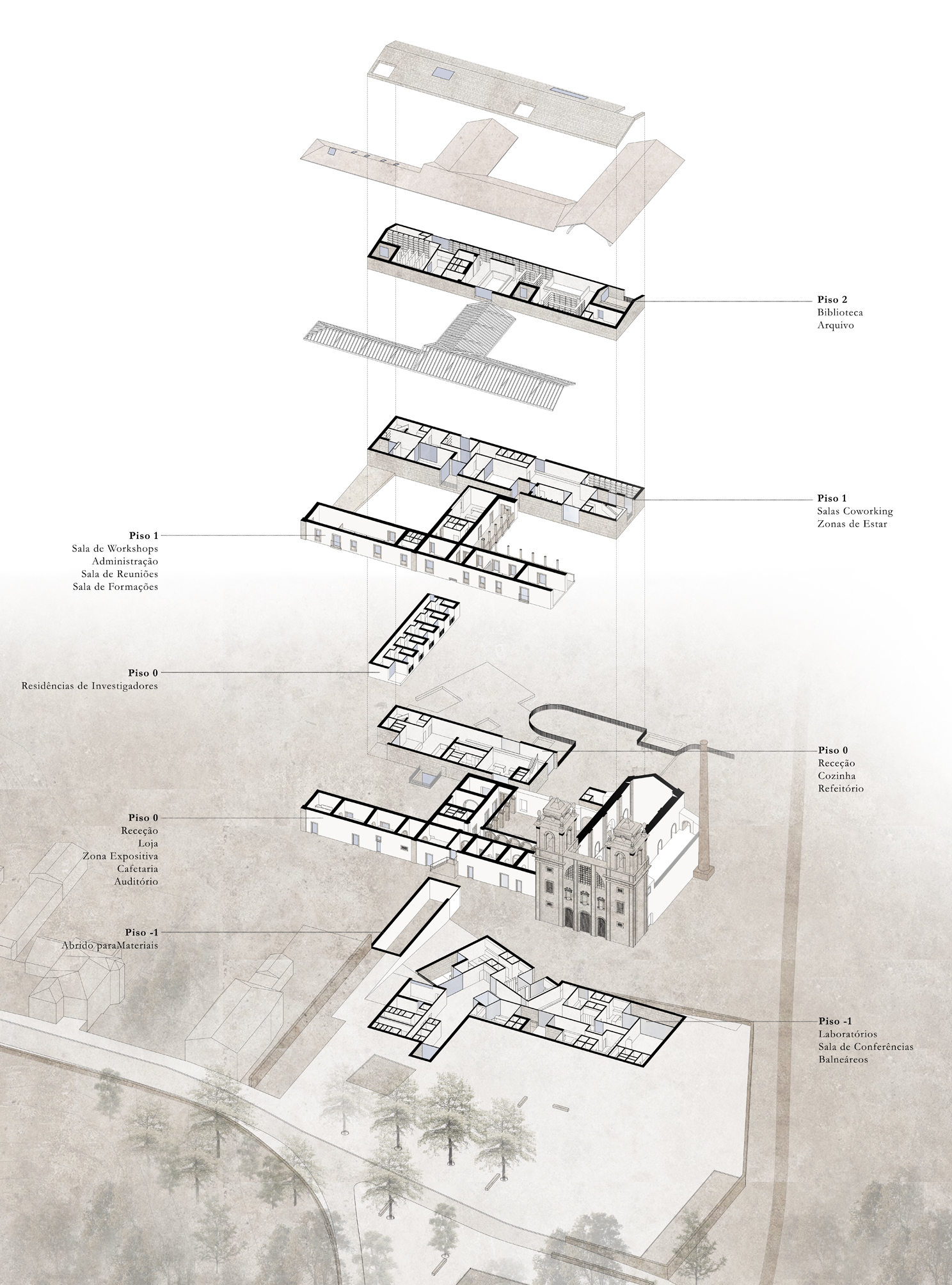Laboratório do Vale Mondego

Autoria: Ana Rita Caniceiro
Orientação: Adelino Gonçalves
Co-Orientador:
Universidade de Coimbra - Faculdade de Ciências e Tecnologia
Memória descritiva
RECONFIGURAÇÃO DO MOSTEIRO DE SANTA MARIA DE SEIÇA
Entre as cidades de Coimbra e Figueira da Foz, ergue-se o imponente Mosteiro de Santa Maria de Seiça, classificado em 2018 como Monumento Nacional. Este edifício implantado num território valorizado pelas suas terras fecundas, na zona do Baixo Mondego, abrigou monges cistercienses até ao ano de 1834. No século XX, transformou-se numa fábrica de descasque de arroz. Atualmente descaraterizado pelo tempo, o seu estado de pré-ruína dita a urgência de uma intervenção.
Recorrendo à memória do lugar, onde a componente agrícola perseverou, nasce o Laboratório do Vale Mondego propondo um programa de dimensão científica que contribua para o desenvolvimento sustentável deste território e perpetue o seu legado histórico e cultural. O projeto divide-se em três partes: a requalificação da área exterior envolvente, um espaço destinado ao público no edifício existente e uma área de investigação num novo edifício.
No espaço exterior é desenhada uma praça, regenerando o bosque abatido e definido o caminho até a Capela de Seiça. São ainda propostos um estacionamento e um apeadeiro junto à Linha do Oeste.
Numa perspetiva de estimular a visitação, o edifício preexistente torna-se maioritariamente de acesso ao público. No piso térreo, estão a receção, a loja, a cafetaria e zona expositiva, enquanto no piso superior situa-se uma área polivalente, uma sala de formações e a administração. A igreja é convertida num auditório.
O programa dedicado ao ramo da investigação de carácter privado concentra-se no novo edifício proposto. Este inclui o refeitório, coworking, biblioteca, arquivo e os laboratórios. Considerou-se também a reabilitação de um edifício adjacente para residências de pesquisadores.
O património preserva a história e a memória para as gerações futuras e ao salvaguardá-lo permitimos a continuidade desses valores. É assim papel da arquitetura criar diálogos e abordagens distintas para regenerar estes espaços, pois arquitetura só tem sentido quando abriga a vida e interage com o homem.
MONDEGO VALLEY LABORATORY
RECONFIGURATION OF THE MONASTERY OF SANTA MARIA DE SEIÇA
Between the cities of Coimbra and Figueira da Foz, stands the imposing Monastery of Santa Maria de Seiça, classified in
2018 as a National Monument. This building located in a territory valued for its fertile land, in the Baixo Mondego area, housed Cistercian monks until 1834. In the 20th century, it became a rice husking factory. Currently uncharacterized by time, its pre-ruin state dictates the urgency of an intervention.
Using the memory of the place where the agricultural component persevered, the Vale Mondego Laboratory came to light, proposing a program with a scientific dimension that contributes to the sustainable development of this territory and perpetuates its historical and cultural legacy. The project is divided into three parts: the requalification of the surrounding outdoor area, a public space in the existing building and a research area in a new building.
In the outer space, a square is designed regenerating the felled forest and defining the path to the Chapel of Seiça. There is also a proposal for a parking lot and a railway stop next to the Linha do Oeste.
With a view to stimulating visitation, the pre-existing building becomes mostly accessible to the public. On the ground floor are the reception, shop, cafeteria and exhibition area, while on the upper floor there is a multipurpose area, a training room and administration. The church is converted into an auditorium.
The program dedicated to the field of private investigation focuses on the proposed new building. This includes the cafeteria, coworking space, library, archive and laboratories. The rehabilitation of an adjacent building for researchers’ residences was also considered.
Heritage preserves history and memory for future generations by safeguarding it, we allow these values to endure through time. It is therefore the role of architecture to create dialogues and different approaches to regenerate these spaces, because architecture only makes sense when it shelters life and interacts with man.





